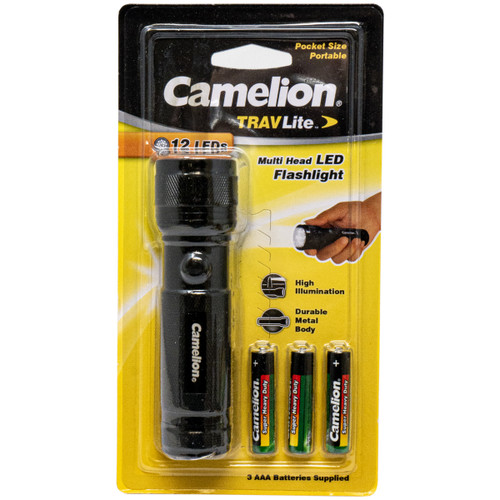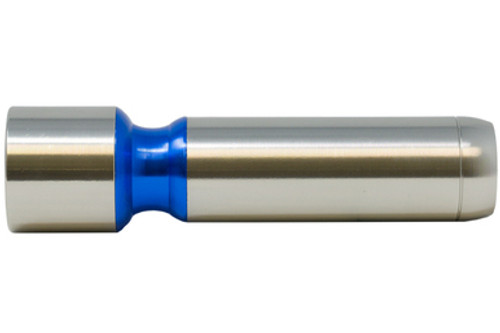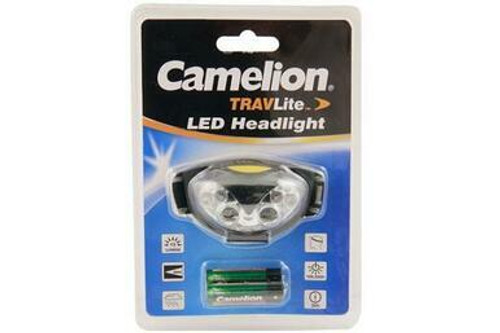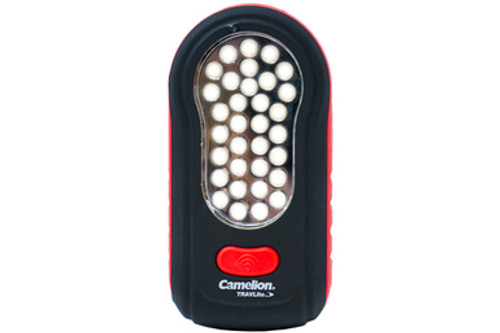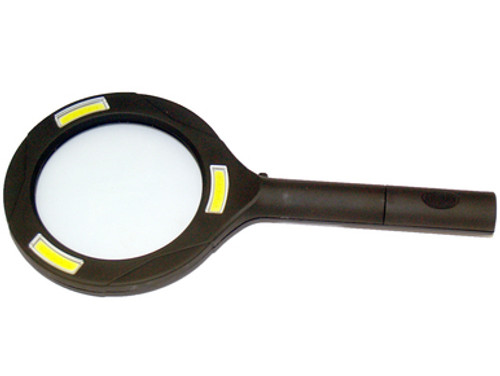
Flashlights: Brightness Matters and Choosing the Right Battery
When it comes to flashlights, brightness is one of the most crucial factors to consider. Whether you're embarking on a camping trip, hiking through the wilderness, or preparing for unexpected emergencies, having a reliable and bright LED flashlight can make all the difference. In recent years, advancements in LED technology have significantly enhanced the performance and options available for consumers, allowing for flashlights that produce incredibly bright beams of light. Two popular battery options that power these high-performance flashlights are CR123 Lithium batteries and 18650 Lithium-Ion rechargeable batteries. Understanding the differences between these battery types, along with their respective advantages and disadvantages, is essential for selecting the best flashlight to meet your needs.
Understanding LED Flashlight Technology
LED (Light Emitting Diode) flashlights have revolutionized the industry with their superior brightness, energy efficiency, and longevity compared to traditional incandescent or halogen flashlights. LEDs produce a brighter and more focused beam of light while consuming less power, which translates to longer battery life and reduced energy costs. Additionally, LED flashlights are more durable and resistant to shocks and vibrations, making them ideal for outdoor and rugged use.
The brightness of a flashlight is measured in lumens, with higher lumen values indicating a brighter light. Modern LED flashlights can range from a few lumens for basic tasks to over 2000 lumens for professional and tactical use. The choice of battery significantly influences the flashlight’s brightness and overall performance, making it essential to choose the right power source.
CR123 Lithium Batteries: High Voltage for High Performance
CR123 Lithium batteries are a popular choice for high-performance flashlights. These batteries are single-use and non-rechargeable, known for their high voltage and long shelf life, making them a reliable option for emergency situations. Typically, CR123 batteries provide a nominal voltage of 3 volts, but certain high-capacity models can deliver higher voltages, contributing to the production of brighter light beams.
One of the primary advantages of CR123 batteries is their ability to produce exceptionally bright beams, often reaching up to 900 lumens or more. This is because the high voltage allows for more energy to be transferred to the LED, resulting in a brighter and more intense light output. Additionally, CR123 batteries have a low self-discharge rate, meaning they can retain their charge for extended periods, even when not in use. This makes them an excellent choice for devices that may sit idle for long periods but need to be ready when required.
However, CR123 batteries come with their own set of drawbacks. They tend to be more expensive than other battery types, which can make them a costly option, especially if you use your flashlight frequently. Furthermore, CR123 batteries are not rechargeable, meaning you will need to maintain a supply of fresh batteries. This can be inconvenient and lead to higher long-term costs, particularly for users who rely heavily on their flashlights for various activities.
Another consideration is the availability of CR123 batteries. While they are widely used in high-performance flashlights, they may not be as readily available in all stores compared to more common battery types. This can pose a challenge in emergency situations where immediate access to replacement batteries is necessary.
18650 Lithium-Ion Rechargeable Batteries: Cost-Effective and Eco-Friendly
In contrast to CR123 batteries, 18650 Lithium-Ion rechargeable batteries have become a popular choice for many high-performance flashlights. These batteries are rechargeable, allowing them to be used repeatedly, which makes them a cost-effective and eco-friendly option in the long run. The 18650 designation refers to the battery's size: 18mm in diameter and 65mm in length, which is a standard size for many rechargeable batteries.
18650 batteries typically offer a higher capacity compared to CR123 batteries, often ranging from 1800mAh to 3500mAh. This higher capacity translates to longer run times, meaning your flashlight can stay lit for extended periods without needing a recharge. Additionally, some 18650 batteries can produce up to 1200 lumens or more, making them suitable for a wide range of activities, from outdoor adventures to professional use.
One of the standout features of 18650 batteries is their rechargeability. Unlike CR123 batteries, which are single-use, 18650 batteries can be recharged hundreds of times, significantly reducing the need for frequent replacements and lowering overall costs. This makes them an excellent choice for users who rely on their flashlights regularly and want a more sustainable and economical solution.
Moreover, 18650 batteries are widely available and can be found in many stores and online retailers. Their popularity means that finding replacements is generally easier compared to CR123 batteries, ensuring that you can keep your flashlight powered up without hassle. Many 18650 batteries come with built-in protection circuits to prevent overcharging, over-discharging, and short-circuiting, enhancing safety during use.
However, 18650 batteries are not without their limitations. They generally have a lower voltage output compared to CR123 batteries, which can result in slightly dimmer light beams. Additionally, while they are more cost-effective over time, the initial investment in rechargeable batteries and a suitable charger can be higher. It is also essential to handle rechargeable batteries with care, as improper use or charging can lead to reduced lifespan or safety hazards.
Comparing CR123 and 18650 Batteries
When deciding between CR123 Lithium batteries and 18650 Lithium-Ion rechargeable batteries, several factors come into play:
Brightness and Performance: CR123 batteries typically offer higher voltage, allowing for brighter light outputs, often exceeding 900 lumens. In comparison, 18650 batteries can also provide substantial brightness, reaching up to 1200 lumens, but they may not sustain as high a brightness level over extended periods.
Cost and Longevity: While CR123 batteries are more expensive upfront and require continuous purchasing, 18650 batteries offer a cost-effective solution over time due to their rechargeable nature. The ability to reuse 18650 batteries reduces the overall cost and environmental impact.
Availability: CR123 batteries may be harder to find in some locations, whereas 18650 batteries are widely available across various retailers, both online and in physical stores.
Convenience: Rechargeable 18650 batteries offer the convenience of recharging via USB cables or charging docks, ensuring that your flashlight is always ready for use. On the other hand, CR123 batteries require you to keep a stock of fresh batteries on hand, which can be inconvenient and less sustainable.
Environmental Impact: 18650 batteries are more eco-friendly due to their rechargeable nature, reducing the number of batteries that end up in landfills. CR123 batteries, being single-use, contribute more to battery waste.
Device Compatibility: It is crucial to ensure that your flashlight is compatible with the type of battery you choose. Some flashlights are specifically designed for CR123 batteries, while others are compatible with 18650 batteries. Always refer to your flashlight's manual or manufacturer recommendations before making a decision.
Choosing the Right Flashlight for Your Needs
When selecting a flashlight that uses either CR123 or 18650 batteries, it’s important to consider several key factors to ensure you choose the right tool for your specific needs:
Intended Use: Determine what you will primarily use the flashlight for. If you need a flashlight for high-intensity tasks such as search and rescue operations or professional use, a CR123 battery-powered flashlight might be more suitable due to its higher brightness. For general outdoor activities like camping or hiking, an 18650 rechargeable battery-powered flashlight offers a good balance of brightness and longevity.
Brightness Level: Assess the brightness requirements based on your activities. Higher lumen counts are essential for tasks that require clear visibility over long distances or in low-light conditions. Ensure that the flashlight’s lumen rating meets your specific needs.
Runtime: Consider how long the flashlight needs to operate on a single charge or set of batteries. 18650 batteries typically offer longer runtimes due to their higher capacity, making them ideal for extended use without frequent recharging.
Portability: The size and weight of the flashlight can impact its portability. Lightweight and compact flashlights are easier to carry, especially during outdoor adventures or emergency situations where portability is crucial.
Durability: Look for flashlights that are built to withstand harsh conditions. Features such as water resistance, impact resistance, and robust construction are important for ensuring that the flashlight remains functional in various environments.
Ease of Use: Consider features that enhance user convenience, such as multiple brightness settings, rechargeable capabilities, and user-friendly interfaces. A flashlight that is easy to operate can be particularly important in high-stress situations.
Battery Charging Options: For 18650 batteries, consider how you will charge them. USB charging ports and charging docks offer convenient options for keeping your batteries ready. Ensure that you have access to the necessary charging equipment if you opt for rechargeable batteries.
Maintenance and Care for Your Flashlight Batteries
Proper maintenance and care of your flashlight batteries can significantly extend their lifespan and ensure optimal performance:
Regular Charging: For rechargeable 18650 batteries, maintain regular charging schedules to keep them in good condition. Avoid letting the batteries fully discharge, as this can reduce their capacity over time.
Storage: Store your batteries in a cool, dry place to prevent degradation. Avoid exposing batteries to extreme temperatures, as this can negatively impact their performance and longevity.
Cleaning Terminals: Keep the battery terminals clean and free from debris to ensure efficient power transfer. Use a dry cloth to wipe away any dirt or residue that may accumulate on the terminals.
Safe Handling: Handle batteries with care to prevent damage. Avoid dropping or subjecting them to rough handling, which can cause internal damage or leaks.
Proper Disposal: Dispose of used or damaged batteries responsibly. Many communities offer recycling programs for batteries, which help reduce environmental impact and promote sustainability.
Safety Considerations
When using any type of battery-powered flashlight, safety should always be a priority:
Avoid Mixing Battery Types: Do not mix different types or brands of batteries in a single flashlight, as this can cause uneven power distribution and potential damage to the device.
Check for Damage: Regularly inspect batteries for signs of wear, such as swelling, leaks, or corrosion. Discontinue use immediately if any damage is detected and replace the battery.
Follow Manufacturer Instructions: Adhere to the manufacturer’s guidelines for charging, usage, and maintenance to ensure safe and efficient operation of your flashlight.
Use Appropriate Chargers: Always use the correct charger for your rechargeable batteries to prevent overcharging or undercharging, which can lead to battery failure or safety hazards.
Environmental Impact and Sustainability
Choosing the right battery type also has implications for environmental sustainability. Rechargeable 18650 batteries are a more eco-friendly option compared to single-use CR123 batteries. By opting for rechargeable batteries, you reduce the number of batteries that end up in landfills, thereby minimizing environmental waste and conserving natural resources. Additionally, many 18650 batteries are designed to be recyclable, further enhancing their sustainability credentials.
When it comes to selecting the best battery for your bright LED flashlight, understanding the differences between CR123 Lithium batteries and 18650 Lithium-Ion rechargeable batteries is essential. Both battery types offer unique advantages that cater to different needs and preferences. CR123 batteries excel in providing high brightness and long shelf life, making them ideal for emergency use and high-performance applications. On the other hand, 18650 rechargeable batteries offer cost-effectiveness, eco-friendliness, and convenience through their rechargeable nature, making them suitable for regular use and outdoor activities.
Ultimately, the choice between CR123 and 18650 batteries will depend on your specific requirements, usage patterns, and budget. By carefully evaluating your needs and considering the factors outlined in this guide, you can make an informed decision that ensures your flashlight remains a reliable and indispensable tool in any situation. Whether you prioritize brightness, longevity, cost savings, or environmental sustainability, there is a battery option that aligns perfectly with your flashlight and usage needs.
Investing in a high-quality LED flashlight paired with the right battery type will enhance your ability to navigate dark environments, perform tasks efficiently, and respond effectively in emergencies. Embrace the advancements in LED and battery technology to ensure that your flashlight provides the brightness and reliability you need, whenever and wherever you need it.




